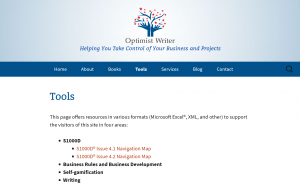I have written recently a new article for Mekon’s Bitesize series on S1000D business rules. It addresses two XML attributes, the use of which can change Business Rules production process from slow and tedious to efficient, and maintenance costs of technical publications from high to reasonable. These attributes are the business rule Decision Point Priority (brDecisionPointPriority), and business rules Severity Level (brSeverityLevel). Both attributes are present in the new business rules Document (brDoc) Schema introduced in the S1000D Issue 4.2, whereas the latter (brSeverityLevel) has been also added to the well-known BREX Schema. To find out more about these attributes click on the title of the article “brDoc: The Attributes You Shouldn’t Ignore” or here.
(Credits: Photograph ©canva.com with the keyword characteristic)
To learn more about business rules in general and about S1000D business rules in particular, and to keep them under control, check out the following books:
and resources:







